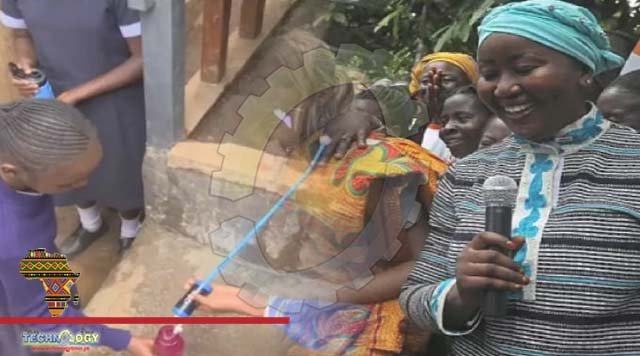In Kenya, water scarcity remains a challenge. The country is among the most water-scarce countries across the world. Rosario Kisui, who lives in Nairobi, collects water from a stream near her home.

Atmospheric generator , It takes Kisui and her neighbours around thirty minutes to fetch the water needed for daily chores. “We live here with my children. I gave birth to my children here and raised them here. Since I moved here, there has been no water. We wonder what’s the purpose of this tap is or whether we can uproot it and throw it away because there is no water. We fetch water from the river. It is the water we use to bathe, drink and cook with. At times, our children have suffered from stomach aches. When our stomachs hurt, we go to the hospital but sometimes we do not need to go to the hospital .Let us just survive because there is no other way. This is our water,”
David Nyaga has been living in Nairobi for three years and only receives water to his home once a month because of water rationing. Without regular supply, he has to collect water from a well within his compound. “I have been living here for three years now, but the main issue that we are facing now is scarcity of water. So here, water comes only once in a month. So I have to have a plan ‘B’, which is the borehole, but the borehole water is not safe for drinking. So, I just use it for cleaning, washing and other things – because sparkling and bottled water prices are very high, which I cannot afford,” explains Nyaga. Kenya, 9.9 million people drink directly from contaminated surface water sources, estimates UNICEF. eth Koigi, CEO of Majik Water, had her own experience of having to buy contaminated water while at university.
Koigi explains she wanted to find a way to curb the issue of water scarcity in Kenya’s informal settlement areas.Majik Water is a social enterprise that specialises in air-to-water technologies. The company was started in 2017 by three founders – Beth Koigi, Anastacia Kaschenko and Clare Sewell – and began production at the end of 2019.”Basically, this machine is called an atmospheric water generator, and it can produce up to 500 litres of water (per day). But sometimes if the humidity is higher than 60%; relative humidity – it can produce all the way to 700 litres of water. But basically, this machine uses dehumidification processes so we basically condense the water vapour in the atmosphere,”
Source: This news is originally published by africanews